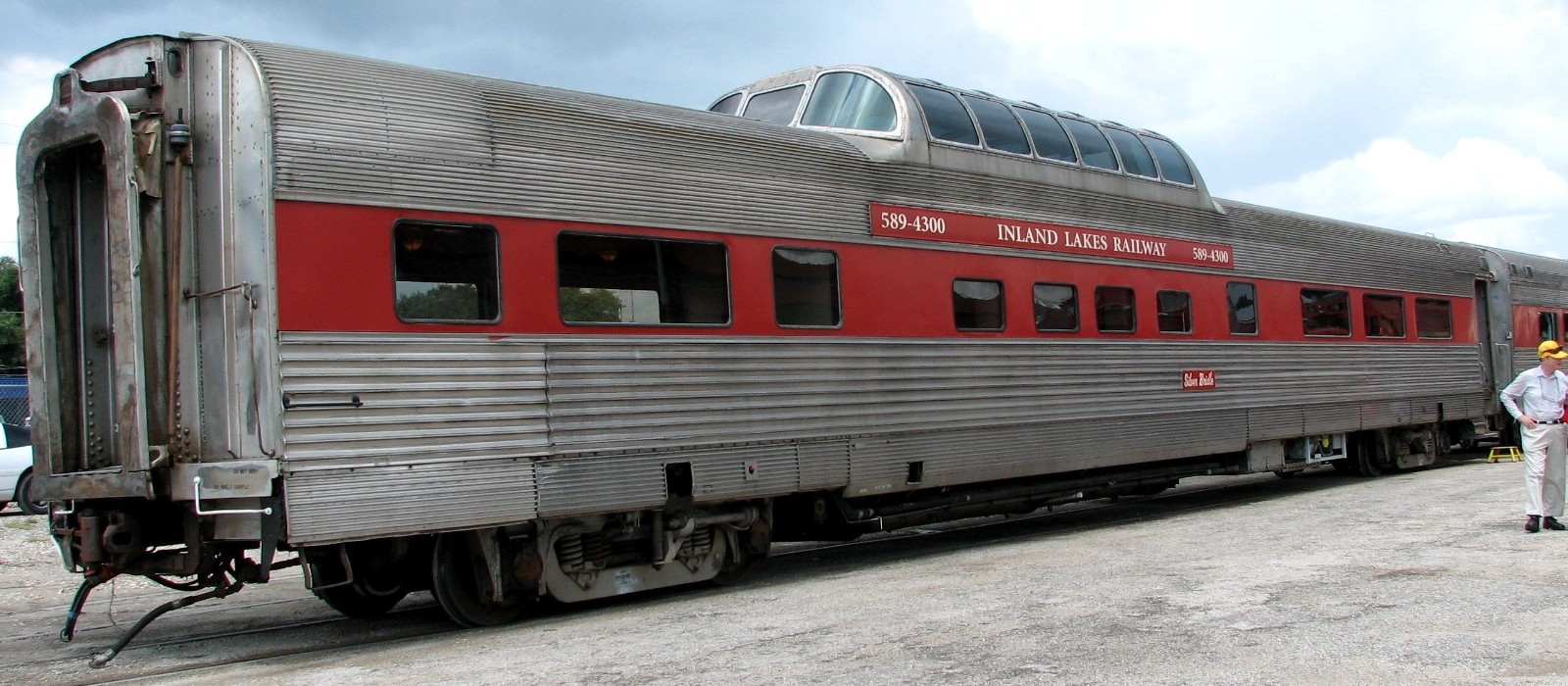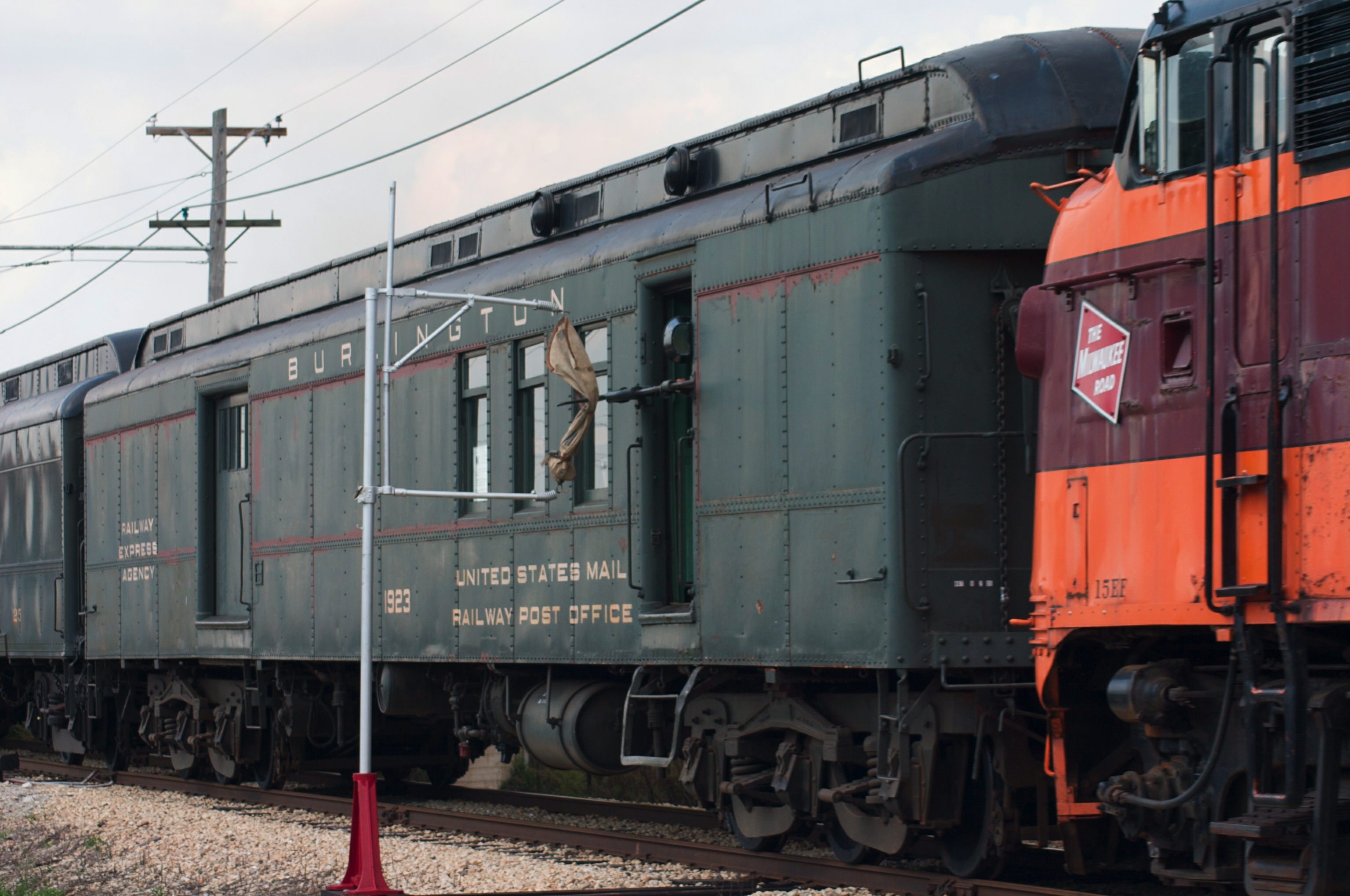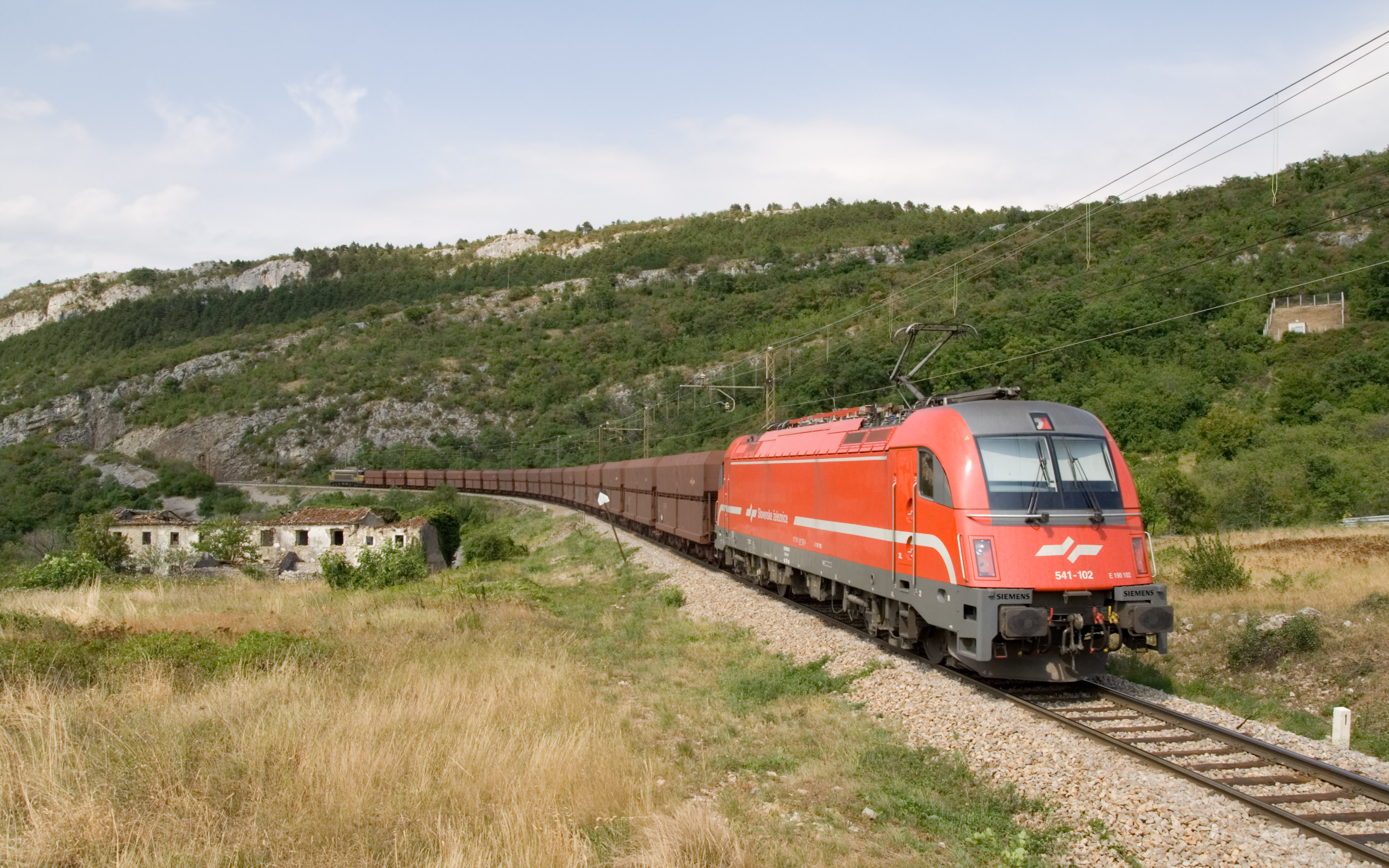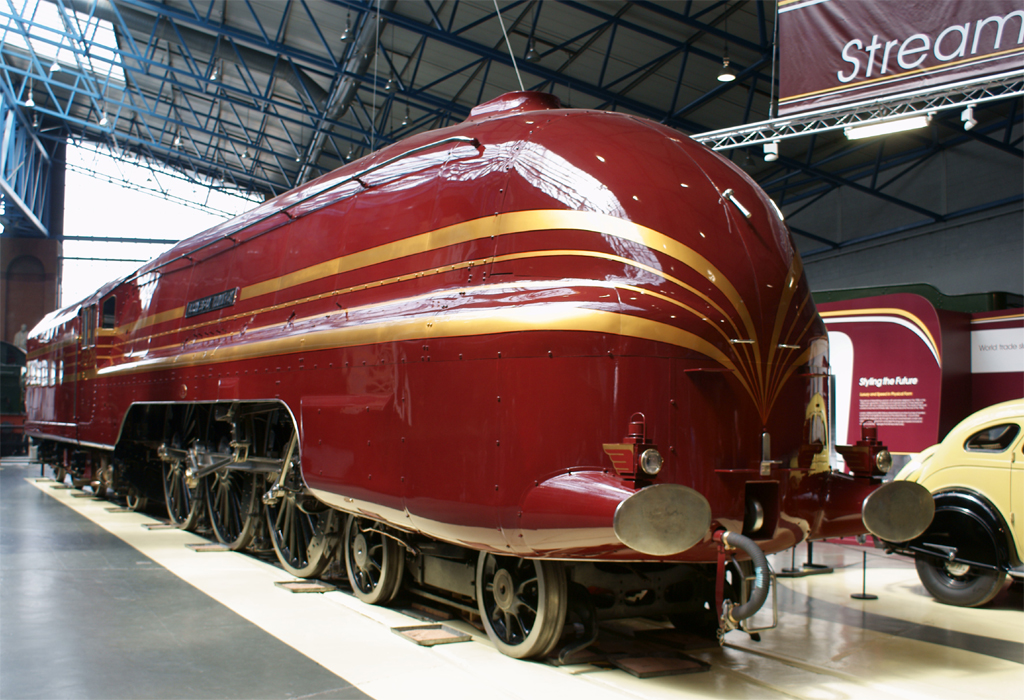|
San Joaquin Daylight
The ''San Joaquin Daylight'' was a Southern Pacific passenger train (train numbers 51 and 52) inaugurated between Los Angeles and San Francisco's Oakland Pier by way of the San Joaquin Valley and Tehachapi Pass on July 4, 1941. Travel times were between 12 hours (1970) and 14 hours (1944). It operated until the advent of Amtrak in 1971. History Train numbers 51 and 52 were named the ''San Joaquin Flyer'' on March 20, 1927. The name was changed to the ''San Joaquin'' on the January 1928 timetable. All streamlined lightweight equipment brought the name change to ''San Joaquin Daylight'' on July 4, 1941. Passenger cars Pullman-Standard built coaches were assigned to the two train sets, both articulated pairs and singles. The 40-seat dining car and parlor-observation car had been built for the original 1937 ''Daylight''. Each train set had ten cars painted in SP's Daylight colors (red and orange, with black roofs and white striping and lettering), and included two head-end cars r ... [...More Info...] [...Related Items...] OR: [Wikipedia] [Google] [Baidu] |
EMD SDP45
The SDP45 is a six-axle, C-C, diesel-electric locomotive built by General Motors' Electro-Motive Division of La Grange, Illinois. It was a passenger-hauling version of the SD45 on a stretched locomotive frame with an extended, squared-off long hood at the rear, aft of the radiators, giving space for a steam generator for passenger train heating. This steam generator placement followed the pattern set by the SDP35 and SDP40. Original owners The Southern Pacific Railroad ordered their ten on May 9, 1966, with the units being placed in service between May 24 and July 26, 1967, initially on the '' City of San Francisco'' between Oakland and Ogden, and eventually used system-wide. As built, each unit carried of fuel and of steam generator water in a partitioned underframe tank. The steam generator was a Vapor Model OK-4740. SP's units had Pyle National Gyralights on the leading end, came with Nathan P-3 horns, and cost $317,156 each (SP's straight SD45's from the same peri ... [...More Info...] [...Related Items...] OR: [Wikipedia] [Google] [Baidu] |
Sacramento
) , image_map = Sacramento County California Incorporated and Unincorporated areas Sacramento Highlighted.svg , mapsize = 250x200px , map_caption = Location within Sacramento County in California , pushpin_map = California#USA , pushpin_label = Sacramento , pushpin_map_caption = Location within California##Location in the United States , pushpin_relief = yes , coordinates = , coordinates_footnotes = , subdivision_type = Country , subdivision_name = United States , subdivision_type1 = State , subdivision_name1 = California , subdivision_type2 = County , subdivision_name2 = Sacramento ---- , subdivision_type3 = Region , subdivision_name3 = Sacramento Valley , subdivision_type4 = CSA , su ... [...More Info...] [...Related Items...] OR: [Wikipedia] [Google] [Baidu] |
Automat
An automat is a fast food restaurant where simple foods and drinks are served by vending machines. The world's first automat, Quisisana, opened in Berlin, Germany in 1895. By country Germany The first automat in the world was the Quisisana automat, which opened in 1895 in Berlin, Germany. A similar restaurant existed in Breslau in 1904. Japan In Japan, in addition to regular vending machines which sell prepared food, many restaurants also use food ticket machines ( ja, 食券機, shokkenki), where one purchases a meal ticket from a vending machine, then presents the ticket to a server, who then prepares and serves the meal. Conveyor belt sushi restaurants are also popular. Netherlands Automats ( nl, automatiek) provide a variety of typical Dutch fried fast food, such as frikandellen and croquettes, but also hamburgers and sandwiches from vending machines that are back-loaded from a kitchen. FEBO is the best-known chain of Dutch automats. Some outlets are ope ... [...More Info...] [...Related Items...] OR: [Wikipedia] [Google] [Baidu] |
Dome Car
A dome car is a type of railway passenger car that has a glass dome on the top of the car where passengers can ride and see in all directions around the train. It also can include features of a coach, lounge car, dining car, sleeping car or observation. Beginning in 1945, dome cars were primarily used in the United States and Canada, though a small number were constructed in Europe for Trans Europ Express service, and similar panorama cars are in service on Alpine tourist railways like the Bernina Express. In North America, dome cars were manufactured by the Budd Company, Pullman Standard and American Car & Foundry. Southern Pacific Railroad built its own dome cars in its Sacramento, California, shops. In the 1990s Colorado Railcar began producing dome cars. Generally, seats in the dome were considered "non-revenue" like lounge car seats. Configuration A portion of the car, usually in the center of the car but offset towards one end, is split between two levels. The ... [...More Info...] [...Related Items...] OR: [Wikipedia] [Google] [Baidu] |
Sacramento Daylight
The ''Sacramento Daylight'' was a named passenger train operated by the Southern Pacific Railroad, part of the family of "Daylights" which included the ''San Joaquin Daylight'', '' Shasta Daylight'', ''Coast Daylight'', and ''Sunbeam''. It carried train numbers 53 and 54. The Southern Pacific introduced the ''Sacramento Daylight'' in 1946 as a Sacramento section of the Los Angeles—Oakland ''San Joaquin Daylight''; the Sacramento cars were cut out at Lathrop. Around 1970 the through cars ended; the train from Sacramento ran past Lathrop to Tracy and connected to the Los Angeles train there. The ''San Joaquin/Sacramento Daylight'' survived until the formation of Amtrak The National Railroad Passenger Corporation, doing business as Amtrak () , is the national passenger railroad company of the United States. It operates inter-city rail service in 46 of the 48 contiguous U.S. States and nine cities in Canada ... on May 1, 1971, when they were both discontinued. Refere ... [...More Info...] [...Related Items...] OR: [Wikipedia] [Google] [Baidu] |
Railway Post Office
In Canada and the United States, a railway post office, commonly abbreviated as RPO, was a railroad car that was normally operated in passenger service as a means to sort mail en route, in order to speed delivery. The RPO was staffed by highly trained Railway Mail Service postal clerks, and was off-limits to the passengers on the train. In the UK and Ireland, the equivalent term was travelling post office (TPO). From the middle of the 19th century, many American railroads earned substantial revenues through contracts with the U.S. Post Office Department (USPOD) to carry mail aboard high-speed passenger trains; and the Railway Mail Service enforced various standardized designs on RPOs. In fact, a number of companies maintained passenger routes where the financial losses from moving people were more than offset by transporting the mail. History The world's first official carriage of mail by rail was by the United Kingdom's General Post Office in November 1830, using adapted railw ... [...More Info...] [...Related Items...] OR: [Wikipedia] [Google] [Baidu] |
EMD GP9
The EMD GP9 is a four-axle diesel-electric locomotive built by General Motors' Electro-Motive Division between 1954 and 1959. The GP9 succeeded the GP7 as the second model of EMD's General Purpose (GP) line, incorporating a new sixteen- cylinder engine which generated . This locomotive type was offered both with and without control cabs; locomotives built without control cabs were called GP9B locomotives. EMD constructed 3,626 GP9s, including 165 GP9Bs. An additional 646 GP9s were built by General Motors Diesel, EMD's Canadian subsidiary, for a total of 4,257 GP9s produced when Canadian production ended in 1963. The GP9 was succeeded by the similar but slightly more powerful GP18. Design and Production EMD designed the GP9 as an improved version of the GP7, with an increase in power from 1,500 hp to 1,750 hp, and a change in prime mover to the latest version of the 567 engine, the 567C. Externally, the GP9 strongly resembled its predecessor. Most were built with high shor ... [...More Info...] [...Related Items...] OR: [Wikipedia] [Google] [Baidu] |
ALCO PA
The ALCO PA was a family of A1A-A1A diesel locomotives built to haul passenger trains. The locomotives were built in Schenectady, New York, in the United States, by a partnership of the American Locomotive Company (ALCO) and General Electric (GE) between June, 1946 and December, 1953. Designed by General Electric's Ray Patten (along with their ALCO FA cousins), they were of a cab unit design; both cab-equipped lead A unit PA and cabless booster B unit PB models were built. While externally the PB models were slightly shorter than the PA model, they shared many of the same characteristics, both aesthetically and mechanically. However, they were not as reliable as EMD E-units. ALCO's designation of P indicates that they were geared for higher speeds and passenger use, whereas the F designation marks these locomotives as being geared primarily for freight use. However, beyond this, their design was largely similar - aside from the PA/PB's both being larger A1A-A1A types wit ... [...More Info...] [...Related Items...] OR: [Wikipedia] [Google] [Baidu] |
EMD F-unit
EMD F-units are a line of diesel-electric locomotives produced between November 1939 and November 1960 by General Motors Electro-Motive Division and General Motors-Diesel Division. Final assembly for all F-units was at the GM-EMD plant at La Grange, Illinois, and the GMDD plant in London, Ontario. They were sold to railroads throughout the United States, Canada and Mexico, and a few were exported to Saudi Arabia. The term ''F-unit'' refers to the model numbers given to each successive type (i.e. F3, F7, etc.), all of which began with the letter ''F''. The ''F'' originally meant "fourteen", as in , not "freight". Longer EMD E-units for passenger service had twin diesel engines (called " prime movers" in that type of application). The ''E'' meant "eighteen" as in . Similarly, for early model EMD switchers, ''S'' meant "six hundred" and ''N'' meant "nine hundred horsepower" ( respectively). F-units were originally designed for freight service, although many without steam generato ... [...More Info...] [...Related Items...] OR: [Wikipedia] [Google] [Baidu] |
Helper Locomotive
A bank engine (United Kingdom/Australia) (colloquially a banker), banking engine, helper engine or pusher engine (North America) is a railway locomotive that temporarily assists a train that requires additional power or traction to climb a gradient (or ''bank''). Helpers/bankers are most commonly found in mountain divisions (called "helper districts" in the United States), where the ruling grade may demand the use of substantially greater motive power than that required for other grades within the division. Historic practice Helpers/bankers were most widely used during the age of steam, especially in the American West, where significant grades are common and trains are long. The development of advanced braking systems and diesel-electric or electric locomotives has eliminated the everyday need for bankers/helpers in all but a few locations. With the advent of dynamic brakes on electric or diesel-electric locomotives, helpers/bankers can also be used to provide more braking f ... [...More Info...] [...Related Items...] OR: [Wikipedia] [Google] [Baidu] |
Streamliner
A streamliner is a vehicle incorporating streamlining in a shape providing reduced air resistance. The term is applied to high-speed railway trainsets of the 1930s to 1950s, and to their successor " bullet trains". Less commonly, the term is applied to fully faired upright and recumbent bicycles. As part of the Streamline Moderne trend, the term was applied to passenger cars, trucks, and other types of light-, medium-, or heavy-duty vehicles, but now vehicle streamlining is so prevalent that it is not an outstanding characteristic. In land speed racing, it is a term applied to the long, slender, custom built, high-speed vehicles with enclosed wheels. Trains Before World War II Europe The first high-speed streamliner in Germany was the " Schienenzeppelin", an experimental propeller driven single car, built in 1930. On 21 June 1931, the car set a speed record of on a run between Berlin and Hamburg. In 1932 the propeller was removed and a hydraulic system installe ... [...More Info...] [...Related Items...] OR: [Wikipedia] [Google] [Baidu] |
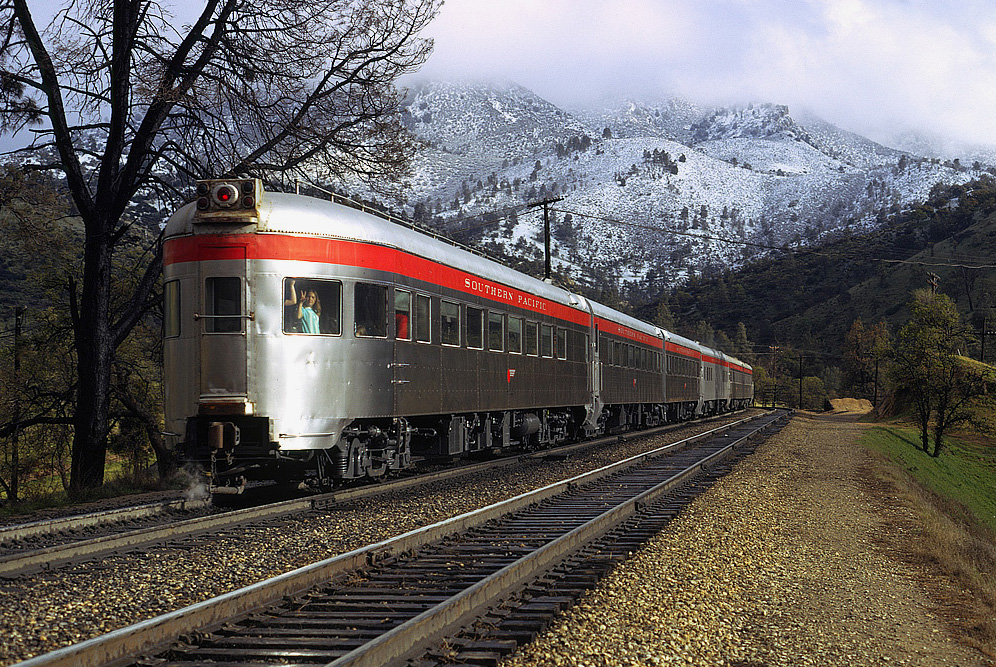
.jpg)

